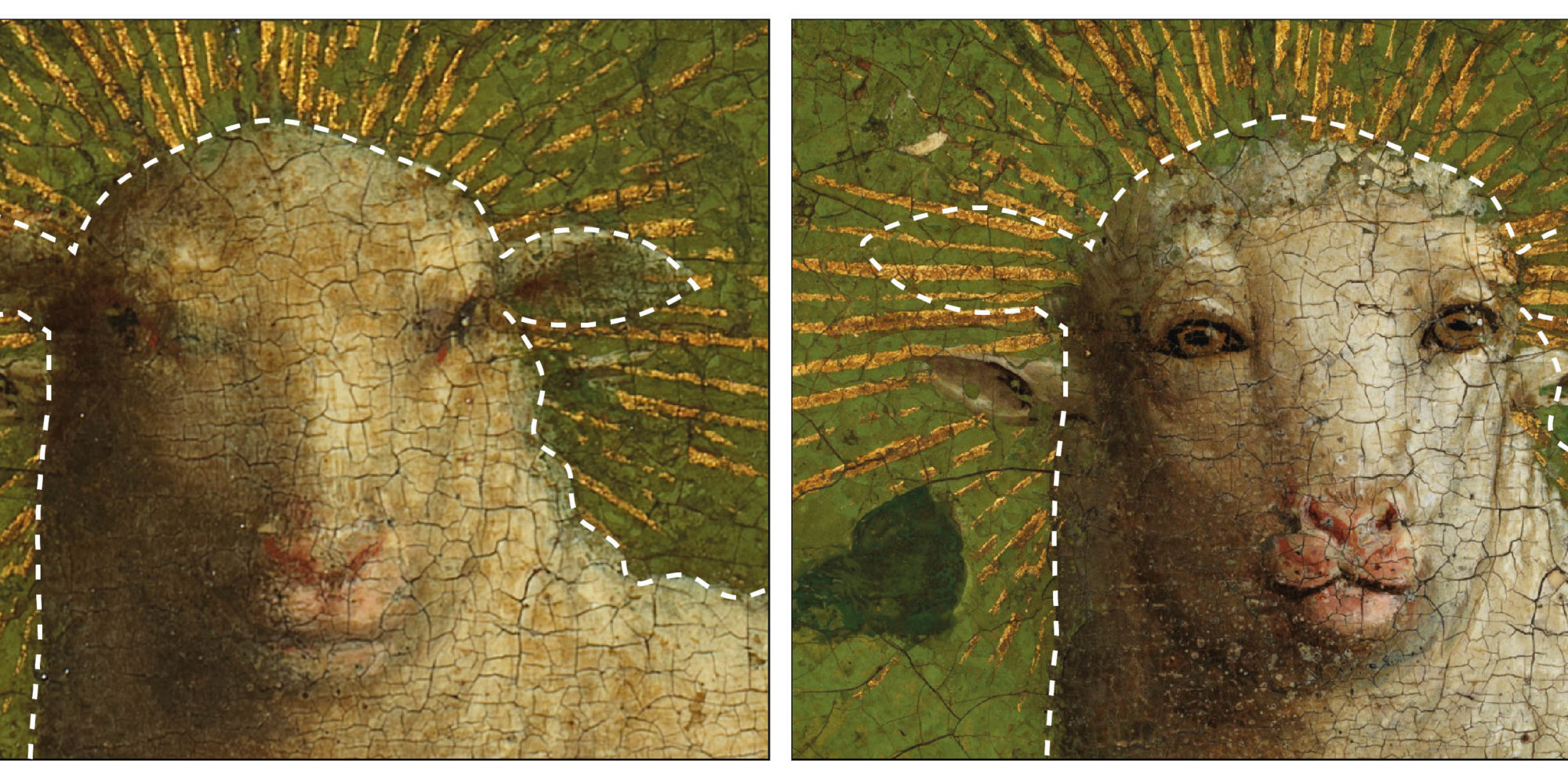Left: Color image after the 1950s treatment. The ears of the Eyckian Lamb were revealed after removal of the 16th century overpaint obscuring the background. (© Lukasweb.be – Art in Flanders vzw). Right: Color image after the 2019 treatment that removed all of the 16th century overpaint, revealing the face of the Eyckian Lamb. The dotted lines indicate the outline of the head before removal of 16th century overpaint. (© Lukasweb.be – Art in Flanders vzw).
A recent article in Science Advances reports how two novel chemical imaging modalities were employed to help understand the many changes made over time to the Lamb of God.
Macro X-Ray Fluorenscence Imaging (AXES and ARCHES – University of Antwerp) and Reflectance Imaging Spectroscopy (National Gallery of Art, Washington) were employed to help understand the changes made over time to the Lamb of God, the focal point of the Ghent Altarpiece (1432) by Hubert and Jan Van Eyck.
The experiments, performed during the extensive conservation treatment by the KIK-IRPA, obtained two major results: a prediction of the facial features of the Lamb of God that had been hidden beneath non-original overpaint dating from the 16th century (and later), and evidence for a smaller earlier version of the Lamb’s body with a more naturalistic build. These non-invasive imaging methods, combined with analysis of paint cross-sections and magnified examination of the paint surface (KIK-IRPA), provide objective chemical evidence to understand the extent of overpaints and the state of preservation of the original Eyckian paint underneath.
The paper “Dual mode standoff imaging spectroscopy documents the painting process of the Lamb of God in the Ghent Altarpiece by J. & H. Van Eyck” is published in Science Advances. More information can be found here.



